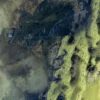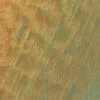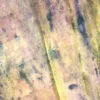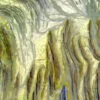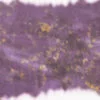Out beyond the edge of the solar system, two spacecraft are heading away from the sun at more than ten miles per second. On board, they carry sounds of Earth, engrooved on old-style long-play records made of gold-plated copper and engineered to last more than a billion years.
NASA launched the craft, Voyager 1 and Voyager 2, in 1977 to study Jupiter and Saturn. Taking advantage of a favourable alignment of the outer planets, Voyager 2 also flew close by Uranus and Neptune, the only probe ever to have done so, and beamed back additional images and data. Meanwhile, Voyager 1, which had already flown out beyond the orbit of Neptune, turned its camera round, and in 1990 took a photograph in which the earth appears as a single pixel – famously described by the astronomer Carl Sagan as a pale blue dot.
Slingshotted outwards by the gravitational fields of the planets they passed, both craft will continue towards the stars indefinitely. In about 296,000 years Voyager 2 will pass within 4.6 light years of Sirius, the brightest star in the night sky. At the time of writing both Voyagers are still sending data home, but by the mid 2020s they will finally run out of power and fall silent. After that they will only ‘speak’ again in the astronomically unlikely event that an intelligent entity finds one or both and plays the records they carry. All other things shall change, but they remain the same, till heaven’s changes have their course, and time hath lost his name.
The sounds on the records, chosen by a small group convened by Sagan, include surf on a beach, wind and thunder, the songs of birds and whales, greetings in fifty-five languages and electrical signals from the brain of a woman in love. There are also images encoded on the records: printed messages from US President Carter and UN Secretary General Waldheim, and photographs of ordinary people going about activities that were normal in the 1970s such as gurning in supermarkets. There are landscapes, plants and animals and the human body – although detailed depictions of genitals and the belly of a pregnant woman were not considered acceptable by NASA. A diagram on the cover of the records locates the Sun in relation to the different rhythmical beat of fourteen nearby pulsars – stars that emit rotating beams of electromagnetic radiation that sweep out across space like the signals from lighthouses.
One of the greatest treasures on the discs is proclaimed in words etched into them by hand: ‘To the makers of music – all worlds, all times.’ The twenty-seven tracks range from Bach to Chuck Berry, and are so varied in origin and kind that they escape a quick summary. One of the things that stands out in many of them, however, is the human singing voice in all its brilliance and directness. This is particularly so in tracks such as ‘Tchakrulo’, a three-part harmonisation for male voices from Georgia, and the Bulgarian ‘Izlel je Delyo Hagdutin’, in which pipes accompany a female voice that is both sweet and awesomely powerful.
Among the final four tracks are three that suggest that something of what is most essential in the human spirit is better expressed in music without words. The first of the last three is ‘Flowing Streams’, a Chinese classic composed more than two thousand years ago. Performed by Guan Pinghu on an unaccompanied guqin, or seven-stringed zither, the music is meditative and in some respects quite simple. As well as depicting the river, which the ancients believed to be the blood of the world, ‘Flowing Water’ is said to tell of a great friendship between its composer, Bo Ya, and a woodsman named Zhong Ziqi. It is said that when Ziqi died, Bo Ya broke the strings of his instrument and vowed never to play the piece again. Succeeding generations have continued to regard the music as a memorial to friendship as well as the beauty of life.
Ann Druyan, who was creative director for the project, identified ‘Flowing Water’ with the help of an American musicologist very near to the deadline for production and dispatch of the discs. Excitedly, she left a message on Sagan’s answering machine, describing her discovery. The two had been having an affair, and when Sagan called back he asked her to marry him. She accepted. This romance then found its way into the Golden Record as it was electrical signals from Druyan’s brain that featured on the recording of ‘a young woman passionately in love’. In 2017, the folk singer Jim Moray put this story at the centre of his song ‘Sounds of Earth’.
The last track but one on the Golden Record is ‘Dark Was the Night, Cold Was the Ground’ by Blind Willie Johnson. Recorded in 1927, the sound is scratchy – the auditory equivalent of an old-time movie or a fading photograph. The guitar comes first: a bottleneck, metallic slide through blue notes in an introductory phrase before picking out the tune. Johnson begins to sing about half a minute in. He hums and aahs but never quite articulates the desolate words of the song (‘Dark was the night, and cold the ground / On which the Lord was laid; / His sweat like drops of blood ran down; / In agony he prayed . . .’). But in a little over three minutes, the track helped define blues and slide guitar for generations to come. Pier Paolo Pasolini used the recording in his 1964 film The Gospel According to St Matthew, and in 1984 Ry Cooder based the title track for Paris, Texas on what he called ‘the most soulful, transcendent piece in all American music’.
The final track on the Golden Record is the cavatina from Beethoven’s String Quartet No. 13. A cavatina is a short, simple song, and Beethoven has composed just that: a tender theme in two parts that he asks to be played adagio molto espressivo – slowly and very expressively. The simplicity of the piece is all the more striking given the context, for the thirteenth quartet is one of the longest and most ambitious of the late quartets, and Beethoven intended the cavatina to be played before the fiendishly complex and frenetic Grosse Fuge, or Great Fugue. It’s a little like passing through a forest glade dappled in sunlight before ascending a mountain range.
People hear different things in the cavatina, observes the musicologist Philip Radcliffe. ‘Some have felt it to be a profoundly tragic piece of music, while others have stressed its serenity, or its religious fervour.’ Ann Druyan reports that when she first heard it she felt the cavatina captured a kind of ‘human longing and even human hopefulness in the face of great sadness and great fear’ that moved her profoundly. The Golden Record became her ‘big chance to pay Beethoven back’. Later, Druyan discovered two things that amazed her. First, the composer had actually thought about the possibility of his music going into space, writing on the margin of one of his pieces: ‘What will they think of my music on the star of Urania?’ (a reference to the planet Uranus, which had been discovered when Beethoven was a boy). Second, on the manuscript for the quartet containing the cavatina he wrote Sehnsucht – the German word for longing. ‘That affected me deeply,’ says Druyan, ‘because that was at the heart of the Voyager record: longing for peace and longing to make contact with the cosmos.’
The two copies of the Golden Record were shot into space nearly fifty years ago. Today, an electronic device could store vastly more information – although it would be unlikely to endure for so long. There has been no end of talk as to which music and images would go on a new mission. The comedian Steve Martin joked that aliens had already been in touch to say ‘send more Chuck Berry’. The composer Philip Glass has suggested Bach’s cello suites. Bach, whose music already accounts for more than a tenth of all the music on the Golden Record, ‘takes you by the hand . . . and walks you into states of being that you didn’t even know existed’. He also suggested music from Africa, throat singing and flute-playing from South India. But the writer Mireille Juchau argues a satisfactory set of choices could be beyond reach: ‘The longer I consider it, the less possible it seems to capture the simultaneous unfolding of beauty and ruin in our present moment.’
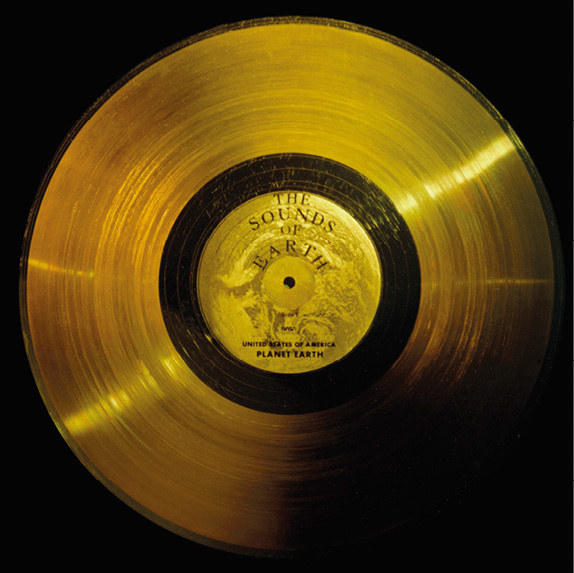
Images courtesy of NASA, Cover of the Golden Record and The Golden Record


